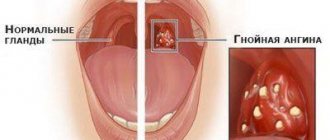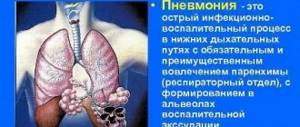Symptoms and signs
Acute respiratory viral infections represent a whole group of different diseases that occur in an acute form with an inflammatory process. As a rule, they affect the respiratory tract and are by far the most common diseases of both children and adults. They are characterized by an extremely high rate of spread during the epidemic. Symptoms include headache, rhinitis, sore throat, general weakness and lethargy. In addition, a viral disease is often accompanied by dizziness and cough. Most often people are interested in the question: how many days is a person contagious with ARVI?
After how many days does a patient with ARVI become infectious?
Respiratory infections are widespread, and the airborne transmission of dangerous viruses plays a significant role in the mass infection of people. Many people are not sufficiently aware of the methods of infection, so they come into contact with the sick person without taking any protective measures. In addition, there is an opinion that communication with a sick person is dangerous only in the first two to three days after the onset of a cold.
In fact, to the question of how contagious a person is with acute respiratory viral infections of any kind and influenza, experts give the answer: the entire period of illness, as well as at least a day before the appearance of noticeable symptoms and a couple of days after.
How many days does it take for the symptoms to subside and for a patient with ARVI to be non-contagious?
To understand exactly how many days a person remains infectious after an acute respiratory viral infection, it should be borne in mind that the virus can remain active on the surface of objects, especially in the presence of moisture. Thus, when using a damp towel that was previously used to wipe the sick person, infection of other family members is possible even a few days after the person has recovered.
The patient can be considered fully recovered three to four days after any symptoms, including cough or hoarseness, have disappeared. Only after this time has passed will he not be able to infect others by coming to work or being in the company of loved ones.
Unfortunately, it is not always possible to avoid contact with people who have noticeable signs of a cold. Visiting places such as supermarkets or public transport generally carries a significant risk of infection, since there are many visitors or passengers in the room during the day.
Prevention of flu and colds: medications, hygiene rules and traditional medicine recipes.
What inexpensive cold medicines will help speed up recovery? We'll tell you in this article.
Why do they occur?
Acute respiratory disease most often occurs in people with weakened immune systems. However, among the reasons for their appearance there may be the following unfavorable factors:
- All kinds of chronic diseases significantly undermine the body's protective functions. Thus, a person becomes susceptible to viral infections.
- Poor nutrition with insufficient amounts of proteins, fats, vitamins and microelements very often becomes the cause of frequent colds.
- Stress and long-term depression undermine health. In addition, hypothermia has a negative impact, which can reduce the immunity of any person.
- Elderly people and young children are at risk.
- Poor ecology, as a result of which the body is forced to fight toxins and poisons every day, also significantly reduces protective functions.
As you know, the general condition of the body depends on the healthy microflora of the stomach. It is the key factor in human health. In addition, the state of the microflora often determines how many days a patient with ARVI is contagious. Frequent dysbiosis caused by taking antibiotics or other medications, as well as alcohol, disrupts the microflora of the stomach and thereby makes a person defenseless.
How viruses spread
How many days is ARVI contagious? Doctors say that in the first two to three days of the disease there is a risk to others. Moreover, sometimes a person becomes potentially dangerous even before the onset of the first signs of the disease. A person often spends this short period at work or school, and also visits other crowded places. That is why during a flu epidemic it is recommended to avoid crowded places and spend as much time as possible at home.
After the first signs of the disease appear (fever, rhinitis, headache and weakness), the peak begins. Patients most often spend this period at home, where family members are at risk of getting sick. Unfortunately, it is not always possible to accurately determine how many days a person is contagious with ARVI. As you recover, a cough may appear, and in case of prolonged illness, stomatitis or herpes may appear. They arise due to weakened immunity and therefore often accompany a cold.
Characteristic signs and possible risks
Complications of the disease can arise due to the fact that the disease is difficult to determine at the first stage, that is, immediately after infection. Subsequently, the patient develops characteristic symptoms:
- Temperature increase.
- Depending on the virus, the patient has a dry cough, sore throat or runny nose.
- Possible discomfort in the ears due to a cold.
ARVI symptoms
The places where viruses accumulate the most are all public places, namely vehicles, supermarkets, cafes. Often a patient can catch a cold while in a draft, so after cooling the body becomes vulnerable to infection and the disease develops. It is worth noting that with strong immunity, a person suffers from ARVI from four to fourteen days.
Attention! If the illness does not go away within two weeks, then you must urgently seek the help of a specialist to prescribe antibiotics. Otherwise, complications may arise, which will lead to long-term therapy.
How long is a person contagious with acute respiratory viral infections or acute respiratory infections?
Depending on the strain of the virus, the duration of symptoms may last for a long time. When a bacterial infection is added to the general damage to the body by a virus, the immune system is unable to resist and the disease develops more actively with accompanying complications.
A person whose body has been infected by the virus poses a risk of infection to others already a day before visible symptoms begin to appear. That is, the patient, not knowing about the infection, already infects others. To have a more accurate understanding of how long a patient can spread the virus, you should know how long ARVI or ARI lasts. According to average statistics, respiratory symptoms, supported by high temperature, accompany the patient for five days, which means that during this period the patient actively spreads the existing virus. Upon completion of treatment and the disappearance of symptoms, a person can spread the pathogenic infection for another two days without knowing it. In general, you can become infected from a sick person within ten days of the course of his illness.
What is ARVI and its symptoms
Attention! If a person experiences complications that manifest themselves in the form of bronchitis or sinusitis, then pathogenic microbes are released into the surrounding space for three weeks.
A secondary question arises: how long does a person remain contagious with acute respiratory infections and influenza? The duration of these ailments is slightly longer than ARVI, since influenza is also a respiratory disease. For about ten to fourteen days a person suffers from an acute respiratory infection and secretes a large number of dangerous microorganisms. After completing treatment, a person remains able to infect others for another two days.
It is important! There are complications when the duration of the illness drags on for three weeks and during this time the person remains a virus carrier. Therefore, it is very important to promptly begin antiviral therapy, which can quickly block the manifestations of infection.
Safety measures when a person with ARVI is present at home
It is important to remember that even during the incubation period, carrying the virus is already contagious to others. After the incubation period, an acute period of the disease begins, which is characterized by the ability to infect for three days. If the immune system is weak, the ability to spread the pathogenic virus persists for a week. The further course of the disease is characterized by a less active ability to infect people, since infection is possible only through direct contact or through the use of the patient’s personal belongings.
After a week-long course of the disease, if untimely treatment is provided, then a period of complications begins. In addition, bacteria, to one degree or another, retain the ability to be released into the environment until the end of the disease.
What to do for a patient
It is highly undesirable to combine treatment of acute respiratory diseases with attending school or work. A person should spend at least three days at home and, if possible, undergo the necessary tests and x-rays so as not to miss pneumonia. Sometimes the infection develops so rapidly that it becomes dangerous to spend these days on your feet.
The sooner a person begins treatment, the fewer complications will arise as a result of infection. In order not to infect your loved ones, a person should use separate dishes and towels. It is advisable to place the patient in a separate room for as many days as ARVI is contagious to others.
The incubation period can last up to fourteen days, depending on the protective properties of the body. The disease, as a rule, does not manifest itself during this entire period, but others may suffer from the carrier of the virus.
Why and how does ARVI become infected?
However, if the number of microorganisms in the air is too high, the body is unable to cope with the increased load, and then the person becomes ill. The first signs of ARVI do not appear immediately, but most often on the second or third day after contact with a virus carrier.
When does a person who has contracted the virus become infectious to others? From the moment the virus enters the body or only when a runny nose, high temperature and other characteristic symptoms appear?
Disease prevention
During an epidemic, some rules should be taken into account that will allow a person to avoid the flu and other unpleasant diseases:
- At home and at work, cleaning should be done using disinfectants.
- After visiting the streets, be sure to wash your hands, and while walking, do not touch your mouth or nose unnecessarily.
- It is advisable to wear a gauze bandage. If your professional activity involves constant contact with a large number of people, it is advisable to wear protective equipment at least at work.
- You should strengthen your immunity in every possible way. To do this, first of all, you need to devote a sufficient amount of time to sleep and rest.
- It is advisable to consume vitamin drinks, meals containing vegetable protein, as well as fresh vegetables and fruits daily.
- It is highly recommended not to use other people’s hygiene products: towels, washcloths, etc.
- And also during the epidemic, it is advisable to purchase any multivitamin complex.
- Walking is also necessary to strengthen the immune system.
Prevention
Prevention of ARVI is something that should also be mentioned. After all, preventing a disease is much easier than dealing with it in the future.
- The first point of prevention is flu vaccination.
- You can support the body during the widespread spread of the disease with the help of immunostimulating or antiviral drugs. These may be medications such as Aflubin, Anaferon, Arbidol.
- It is very important to saturate the body with the necessary amount of vitamins and microelements every day.
- You also need to properly think through your diet; food should be protein-rich and balanced.
- Prevention of ARVI also means giving up all bad habits and a healthy lifestyle.
- Good uninterrupted sleep (duration: at least 7 hours a day) is very important.
- During the cold season, you need to wear a protective mask. You should also try to avoid contact with sick people.
During cold seasons, even a healthy person often wonders how to avoid becoming infected with dangerous viruses and what measures to prevent colds he should take.
Such people need to remember the following:
- The main places where you can become infected are public transport and crowded places. During the epidemic season, you should not visit them unless absolutely necessary, and also, if possible, minimize trips by metro, especially during rush hour. If this is not possible, it is recommended to cover the airway with a medical bandage and open your mouth as little as possible when in the designated areas. When among your colleagues there is a patient or someone who has just recovered from ARVI, you must avoid close contact for several days;
- if there are no contraindications, it is recommended to get a flu shot (this is often done in city clinics);
- You should pay great attention to washing your hands with hot water and soap and avoid touching your face with unwashed hands;
- You should not be in dusty rooms unnecessarily: viruses often settle on dust particles;
- be careful and not use objects with which the patient was in contact during the infectious period;
- you should not spend money on drugs and dietary supplements that supposedly increase immunity: you need to understand that its increase is achieved only as the immune system fights microorganisms coming from outside;
- It is worth organizing yourself a nutritious diet with a sufficient amount of citrus fruits and green vegetables. During epidemics, it is advisable to eat as little mucus-forming (starchy, dairy) foods as possible and avoid overeating;
- Be careful not to overcool: this can weaken the body's defenses, and then the likelihood of getting sick when exposed to viruses increases.
Thus, the period of contagiousness of a patient with viral respiratory tract infections is quite long and is not limited to the first days after the manifestation of symptoms, as is often believed.
Knowing this and following the rules for preventing ARVI, you can minimize the likelihood of encountering these diseases.
- There are drugs that strengthen the immune system and prevent viruses from entering the body. For example, Forcis, in tablet form, helps protect the mucous membrane from the penetration of harmful bacteria. This preparation contains cistus extract and ascorbic acid. It is convenient to use in crowded places, as well as at work.
- There is a recommendation to lubricate the inside of the nose with oxolinic ointment or boric vaseline, this will also protect the mucous membrane from viruses.
- While on public transport, it is advisable to keep a clove, a piece of calamus root, or a lemon peel in your mouth. They help destroy harmful particles that enter the nasopharynx.
- And after visiting public places, try to gargle with chlorophyllipt, propolis or calendula tincture.
General procedures necessary for the prevention of colds:
- Increased attention to personal hygiene, wash your hands more often after visiting public places
- Avoid rooms with a lot of dust, viruses attach to it
- Do not put unwashed hands near your nose or mouth.
- Avoid eating or drinking food or drinks that the sick person may have come into contact with.
- Avoid hypothermia
- To strengthen your immune system, eat garlic and ginger.
If you suspect that you have contracted an infection, you must take the following precautions:
- Need to take an aspirin tablet
- Drink warm milk before going to bed
- Eat a teaspoon of honey without drinking it, but simply sucking it
If you use preventive methods, then most likely viruses will not affect you, and if you suddenly get sick, you will survive the infection much easier.
How dangerous is the flu?
This is perhaps the most common airborne disease. Symptoms of this disease appear almost immediately. That is, a person talked to someone with the flu in the evening, and the next morning he developed similar symptoms. It is extremely unwise to go to work or school with all the symptoms of the flu. The disease, as a rule, develops rapidly, and if in the morning the body temperature was 37 degrees, then in the evening it can rise to 39.
How many days does a person remain contagious after he has had the flu (ARI, ARVI)?
Answers:
Marya
contagious in the first 4 days before the onset of clinical symptoms and another 5 days after the clinical symptoms disappear
Vadim Bogdanov
For some time, yes - at least 2 weeks.
Natalia Medvedeva
If we talk only about acute respiratory viral infections and acute respiratory infections, then only during the period of high temperature.
Anna
a person is contagious for the first five days after infection
Lyudmila
Transmission of the pathogen from person to person occurs throughout the entire period of the disease through airborne droplets when coughing, sneezing, or talking.
Terapi 03
If a doctor prescribes a person who had an acute respiratory infection, then the person is no longer contagious, but can only become infected again.
Fighting the flu
There are a number of misconceptions about this disease:
- I'll try to bring down the temperature. Instead of bringing down the temperature, which barely reaches 38 degrees, the patient is recommended to drink as much fluid as possible. Thus, while the immune system independently fights viruses, the patient uses water to remove toxins from the body and thereby alleviates his condition.
- You can't swim. Even with a low body temperature, it is recommended to shower and swim. The fact is that toxins also accumulate on the surface of the skin, which come out along with sweat. This is especially true for the patient’s face, which should be washed throughout the day. This should be done during all the days that a patient with ARVI is contagious to others.
- Use of antibiotics. There are no antibiotics against the flu. There are special antiviral drugs for this disease. And only when a bacterial infection joins a viral infection can an antibiotic be used.
- The use of folk remedies. In the first days, you cannot be treated only with folk remedies. Some of them are capable of provoking the growth of viruses, serving as a breeding ground for them.
How many days are ARVI and influenza contagious? During the week, family members must be extremely careful when caring for a sick relative, as the dangerous period lasts five to seven days. After the flu symptoms have passed, the person will continue to feel weak for some time. During this period, immunity is restored, and therefore it is extremely unwise to go to work in a weakened state. Sometimes a person who has not fully recovered from an illness becomes re-infected with the flu after a short time.
How contagious is a person with ARVI really?
A number of numerous factors are taken into account here, ranging from age to the patient’s immune status. All figures are conditional and are used to simplify clinical statistics. Each case is individual, so if there is any doubt, it is better to limit the child from communication.
The total duration of the disease lasts about 14-20 days. This takes into account the incubation period of up to 3 days, the duration of the active phase of ARVI, residual effects or complications.
Children and adults can remain contagious to others for about 14 days after the main symptoms have subsided.
In case of complicated rhinitis against the background of ARVI, stuffiness and runny nose may persist. The general terms of therapy and final recovery are determined by the characteristics of the body’s strengths.
A patient infected with the virus must be conditionally isolated from society for 2 weeks. A healthy person can easily catch an infection by communicating with a person who has recently had an acute respiratory viral infection. If possible, it is better to avoid communicating with such people until they have fully recovered. If your child’s immunity is reduced, and also if the child is often sick or has diseases of internal organs or systems, then you should completely stop communicating.
Thus, a person is considered not infectious when all symptoms, including residual effects (coughing, slight nasal discharge, mild congestion), have resolved. If someone in the family becomes ill with an infectious disease, the most favorable conditions should be created for all family members so as to eliminate the risk of general infection. Such measures include:
regular wet cleaning;
frequently ventilate the premises;
wearing gauze respirators or protective masks.
Considering that the disease is quite contagious, the simultaneous use of certain personal hygiene items (towels, razors, toothbrushes) should be excluded. It is better to allocate a separate room for the sick person. If there are other children in the family, then it is important to limit their contact, at least until the pronounced signs of a cold or acute respiratory viral infection subside.
The main routes of infection of ARVI are airborne and, less commonly, household. You can become infected unnoticed in public places, transport, schools and preschool institutions, and shops. In people with weak immune defenses, the incubation period can increase to 5 days, so all this time they are potentially dangerous for healthy people in terms of infection. If the symptoms of ARVI last more than 14 days with episodes of exacerbation and subsidence, then this indicates either complications or the addition of a secondary infection.
If the patient has mild signs of a cold, then the first signs of ARVI and influenza may also occur here. When a child or an adult feels unwell after interacting with other people who have recently had an infection, it is important to follow the following basic rules:
mandatory bed rest;
primary diagnosis, drinking plenty of fluids;
if symptoms increase, consult a doctor;
compliance with all doctor’s recommendations until the period of complete recovery.
Failure to comply with instructions and treatment under the condition of continuing work activity lead to the duration of the infectious disease and aggravation of the general pathological process. Deterioration of the condition may lead to hospitalization of the patient.
How many days is ARVI contagious in children and adults? There are no differences from the approximate timing of the beginning of the incubation period until complete recovery in children and adults. The patient, regardless of age, experiences the same clinical picture of varying intensity. The only difference is in the treatment of the disease.
Before visiting guests where children have recently been ill, you need to inquire about their current health. Many parents consider their children to be completely cured, even if some residual effects remain. In fact, the disease is considered completely eliminated when all signs are absent, about a week passes after their cessation . Additionally, you can take care of increasing the child’s immunity. Lubricate the nasal mucosa with antiviral ointments (for example, Viferon), take vitamins, and lead an active lifestyle.
How viruses are transmitted
As a rule, the main routes of transmission of the virus are identified, regardless of how many days ARVI is contagious. Most often this occurs when using a cup, bottle or any tableware of the patient. You can easily become infected just by talking to a sick person. If he sneezes or coughs at the same time, the likelihood of infection increases several times. Often one person sneezing on public transport infects up to ten healthy people just standing next to him. In addition, a person can be contagious even after an acute respiratory viral infection. How many days? About a week. That is why doctors do not recommend visiting public places unless absolutely necessary during an epidemic.
Prevention. How to protect yourself from infection?
Viruses that lead to the development of acute respiratory infections are common on all continents and persist in the body of carriers all year round, but seasonal outbreaks occur in the cold months. This is due to the prolonged presence of a large number of people in public transport and enclosed spaces (kindergartens, schools, offices, etc.), where, due to the operation of heating systems and insufficient ventilation, conditions are created under which the infection is transmitted by airborne droplets.
For prevention, you need to ventilate the premises more often and use personal protective equipment (special masks sold in pharmacies). Masks are chosen that fit as tightly as possible to the face and are replaced every 2 hours.
Viral particles remain active in the environment from 4 hours (in the air) to 17 days (on handkerchiefs and bed linen). They remain viable for a long time on human hands and common household items (door handles, dishes, banknotes, etc.). Many people are interested in how ARVI is transmitted. This can happen through contact, so you need to frequently do wet cleaning with disinfectant solutions, and wash your hands and treat them with antibacterial wet wipes.
How many days is a child contagious?
With ARVI, the incubation period lasts from several hours to two weeks. Throughout this period, the baby can infect others both in kindergarten and on the street. Literally two days before the onset of the main symptoms, the child already does not feel very well. As a rule, these days are the peak, which lasts for three to four days.
After a runny nose, sneezing and cough appear, parents leave the baby at home and begin intensive treatment. During this period, you should take into account how many days influenza and ARVI are contagious, so as not to get sick yourself. The recovery process sometimes takes up to ten days, depending on the state of the immune system.
When does a person stop being contagious with ARVI: incubation period
Even taking into account the fact that a person is only relatively contagious with a cold, he can transmit the disease only at first, when intense mucus secretion occurs and a cough is observed. On days 2–7, immunity suppresses the activity of pathogenic microorganisms. That is, after the acute symptoms disappear, the cold ceases to be contagious.
Residual effects do not pose a threat. The patient may still blow his nose for a long time in the morning and cough up to 5 times a day. In this way, the mucous membranes are renewed, dead cells that were previously infected and destroyed by immune forces are removed from the body.
At the same time, we must not forget that a common cold can develop into ARVI, pharyngitis, sore throat, and other respiratory tract diseases. An infection easily attaches to a weakened person. In this case, the infectious period increases. According to the table of Dr. Komarovsky, ARVI: rhinoviruses, influenza, parainfluenza, parawhooping cough, adenoviruses, reoviruses, respiratory syncytial viruses can be transmitted. There are the following patterns of progression of the respiratory diseases under consideration:
- incubation period from several hours to 15 days - the patient is not contagious;
- incubation period 1–2 days before the first complaints - contagious;
- duration of illness (up to 10 days) – contagious;
- after the disappearance of complaints (up to 3 weeks, more than 50 days - depending on the pathogen) - the infectious period.
The most dangerous cold is 1–2 days before the onset of symptoms and several days after. During this period of time, the virulence of viruses is at its highest.
It is impossible to determine the fact that a pathogenic virus has entered the body in the first 24 hours, since there are no clearly defined symptoms.
For the same reason, treatment of ARVI is usually delayed, because antiviral therapy begins only a few days after infection, when the signs of the disease become pronounced.
Three days after infection, the carrier of the virus becomes dangerous to others.
In some cases, the infection remains active for 7 days, and there are no symptoms of the disease - it all depends on the strength of the immune system. All this time, the infected person does not even assume that he has become a carrier and is already capable of infecting others.
After 7 days, the open stage of the disease begins and the person ceases to be a virus carrier. At this point, the symptoms of ARVI become obvious - fever, aching joints, muscle pain, a feeling of burned skin, etc.
After how many days does a major ARVI become non-contagious?
When intending to calculate how many days ARVI is contagious, one should also take into account the type of causative agent of the cold. Thus, rhinoviruses are considered to be unique “champions” in infecting the population: they make up about 30-40% of all cases of respiratory infections.
In turn, rhinoviruses unite about a hundred types of microorganisms, each of which can cause a cold. Rhinoviruses themselves do not have their own envelope, i.e. are "naked". Their size is negligible: approximately four times smaller than the influenza virus, therefore, they easily penetrate the body.
The incubation period for infection with rhinovirus infection is 2-5 days. Then a runny nose, severe sneezing, and cough appear, but there may not be an elevated temperature. The average duration of the disease is about 7 days.
How long does the infectious period last for ARVI, if the causative agent is rhinoviruses? As a rule, the patient is dangerous to others for more than a week, including 1-2 days before symptoms appear and 2-3 days after they disappear.
How many days is a person with ARVI contagious?
Adenoviruses are less common and are responsible for 2.5-5% of all cases of acute respiratory viral infection. They are also quite diverse and can survive for a long time in water and on household items. Thus, the virus can remain viable for two weeks in a room at normal temperature. Consequently, infection is possible even after the patient has fully recovered, if thorough cleaning has not been done using cleaning agents.
The incubation period for adenoviruses is longer - 5-7 days, fluctuations from 3 to 14 days are possible.
How many people are contagious with ARVI if the disease is caused by adenoviruses? The duration of the dangerous period is at least a week, but in some cases it can reach a whole month.
In addition to the usual symptoms, an adenoviral infection can subsequently cause conjunctivitis, and the symptoms of the disease develop, as a rule, after the patient has apparently recovered. This complication is especially typical for schoolchildren.
The influenza virus, which penetrates the human body, does not immediately make itself felt. Therefore, in order to detect the first symptoms in a timely manner and begin treatment, it is advisable to understand how long the incubation period of ARVI is, how to determine this condition and what measures can be taken at the very beginning of infection. In addition, this will help prevent infection of others.
It should be noted that there are many types of acute respiratory viral infections, the type of which determines the etiology and timing of the development of clinical symptoms. The most common among them:
- flu;
- reovirus;
- respiratory syncytial virus;
- coronavirus;
- adenovirus;
- parainfluenza;
- rhinovirus;
- coxsackievirus;
- ECHO virus.
As a rule, all of the listed subtypes of the disease in question are similar in terms of signs that characterize acute intoxication of the body:
- cough;
- runny nose;
- swelling of the mucous membranes;
- hyperemia of the skin and mucous membranes;
- temperature increase.
But often there is a mixture of various clinical manifestations, which subsequently provokes the occurrence of secondary infectious complications in the form of catarrhal tonsillitis, pneumonia, and bronchitis. Moreover, the development of these diseases can occur directly during the incubation period of ARVI. In such cases, it is believed that immediately after infection with the virus, intensive reproduction of pathogenic aerobic and anaerobic bacteria began in the body.
From the moment the virus enters the body, a person is its carrier, and accordingly, can infect others, even if obvious symptoms have not yet appeared. Typically, influenza and other types of the described illness begin quickly and acutely, within 1-3 days, but with strong protective functions of the immune system, incubation can last about a week.
It is worth noting that a patient with ARVI is contagious throughout the entire period of the pathology until all the virus cells in his body die. This means that even with persistent improvements, a decrease in body temperature to normal values and the elimination of external symptoms of influenza, a person still remains a carrier of the disease and can pose a danger to others, because ARVI is transmitted easily - by airborne droplets.
First of all, it is necessary to clearly understand the difference between these two diseases.
With acute respiratory infections, local damage occurs, most often to the respiratory tract, without a significant increase in temperature (rarely exceeds 38 degrees). The disease progresses slowly and does not spread to other organs; the symptoms of intoxication are either weak or not expressed at all.
Influenza and ARVI are characterized by a sharp, intense onset, with the rapid onset of signs of illness. In addition, these pathologies cause several groups of clinical manifestations:
- from the gastrointestinal tract (vomiting, nausea);
- upper respiratory tract (cough, sore throat, nasal congestion);
- nervous system (migraine, insomnia).
The main difference between the considered respiratory diseases is that the cause of ARVI is necessarily a viral infection, and the patient is contagious for a long period of time, while these qualities are not inherent in acute respiratory infections.
The incubation period of influenza, as already mentioned, is short, and with acute respiratory infections it can be up to 14 days. In this case, the victim’s condition is relatively normal, and sometimes there is no increase in temperature at all, or reaches a subfebrile level.
The first signs of these diseases include:
- sneezing and coughing,
- temperature increase,
- headache,
- aching joints.
A cold has a milder course than the flu. A cold incapacitates a person for several days, and the flu, most often, goes away only after a few weeks.
Unlike a cold, the flu can lead to serious complications that can lead to prolonged hospitalization.
A sore throat is the first sign of a cold; the discomfort disappears around the third day. In parallel with the discomfort in the throat, a person experiences:
- nasal congestion,
- cough,
- rhinorrhea.
All of the above symptoms go away after four to five days.
In adults, fever rarely occurs as a result of a cold, but low-grade fever is possible. Children are more likely to suffer from fever due to a cold than adults.
When you have a cold, watery fluid is released from the nasal cavity for the first 1-2 days. Later, the discharge thickens and acquires a dark shade. This type of mucus is a natural phenomenon and does not mean the activation of a bacterial infection.
Typically, a cold lasts about 7-8 days. In the first 3 days, a person is considered infectious to other people. Since there is a high probability of transmitting the virus, you should adhere to bed rest and minimize contact with others.
If symptoms do not go away for more than a week, most likely a bacterial infection has been added to the cold and you should start taking antibiotics.
Sometimes the symptoms of a cold are confused with sinusitis or allergic rhinitis - hay fever. If the symptoms quickly decrease and improvement occurs, we can say that it is not an allergy, but a common cold.
When the condition remains unchanged after a week, you should consult a doctor.
How to protect yourself
Prevention of acute respiratory infections includes hardening, vaccination, the use of vitamin complexes and home (alternative) medicine. You should also pay special attention to diet and rest. Only under such conditions will there be a strong enough immunity that can resist diseases.
The daily menu should consist of animal protein, which is obtained mainly from poultry meat. In addition, to enhance the body's protective function, polyunsaturated acids found in fatty fish, oatmeal or flaxseed oil are required. Particular attention is paid to vitamins and microelements. Regular intake of vitamin C, as well as group B, should be ensured.
It is recommended to take walks and ventilate the room before going to bed. Hardening helps a lot. In order to improve your health, it is enough to pour cool water on your feet. This procedure does not take much time, but the effect of its action is exceptional. Be sure to rub your feet with a dry towel after rinsing.
Pharmacy and folk remedies
At the pharmacy you can buy the drug "Arbidol", which is taken in the amount of two hundred milligrams per day. Children under six years of age are not recommended to consume more than fifty milligrams, and from the age of six to twelve they can consume one hundred milligrams of Arbidol per day. When caring for a sick relative, you should consider how many days after ARVI the person is contagious.
In addition, folk remedies made from honey, garlic, onions and medicinal herbs will be extremely useful. For example, in winter it is recommended to drink tea with ginger. To do this, brew the peeled root of the plant or add ginger powder to ready-made tea. Rosehip decoction has proven itself to be excellent. It is consumed daily in quantities not exceeding two hundred milligrams per day.
You should remember about the contagious period of ARVI. How many days a person will be sick, so many of his family members will have to use home remedies. For example, regular green tea with lemon or raspberry jam has good antiviral properties. After a walk in crowded places, it is recommended to rinse your nose with saline solution, and before going to bed, drink a glass of warm milk with a few drops of propolis tincture. You can also add a teaspoon of natural honey to the medicinal composition.











